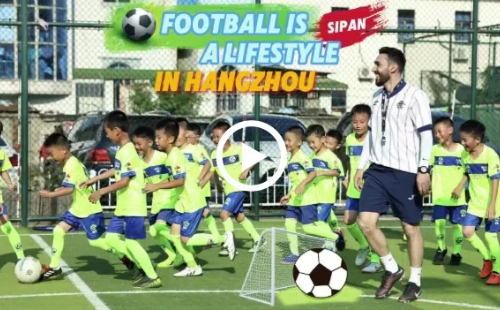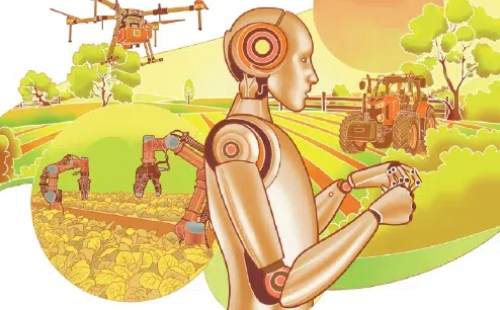Innovation reshapes China's digital landscape
As China recently rang in the Year of the Snake, three unexpected stars dominated the headlines both at home and abroad.
These were — the meteoric rise of Chinese AI model DeepSeek, which is poised to challenge Silicon Valley's dominance; 16 humanoid robots performing the traditional yangge dance at the country's most-watched TV event, and the record-breaking box-office performance of Ne Zha 2, a film powered by cutting-edge animation technology.
While each of these represents a different facet of China's technological rise, their popularity underscores how innovation, ambition and resilience are reshaping China's tech landscape amid rising political suppression from Western countries.
Wang Peng, an associate researcher at the Beijing Academy of Social Sciences, said: "The rare phenomenon of Chinese tech products becoming a global sensation has disrupted conventional thinking about the nation's innovation ecosystem.
"Many countries are wondering how these Chinese startups, not even big names, can give birth to such groundbreaking innovations despite United States' restrictions, and within what kind of system such innovations can take root in such a short time in China.
"They also start to reassess the power of markets, investment funds, application scenarios, young talent, and an open environment to a country's technological rise," he said.
At the center of this year's technological spectacle is DeepSeek, an ambitious Chinese artificial intelligence model gaining global traction with its cost-effective but powerful large model.
Founded by a team of young researchers, DeepSeek burst onto the scene with the release of Deep-Seek-R1, a model boasting capabilities rivaling OpenAI's GPT-4o from the US.
The model quickly amassed over 100,000 GitHub stars, drawing interest from global developers eager to explore its potential. Notably, instead of following the walled-garden approach of its Western counterparts, DeepSeek has embraced an open-source strategy, making its powerful language models available to developers worldwide.
Xing Jie, chairman of a Beijing-based investment fund and an initiator of a leading metaverse forum, said: "What DeepSeek has done is remarkable — it has reshaped the trajectory of AI diffusion. For the first time, China has a voice at the foundational model level, and it didn't come from a government-funded lab or a major tech conglomerate. It came from a market-driven startup."
DeepSeek's rise has also challenged the conventional trap that AI breakthroughs are dictated by computing power. Despite facing severe constraints in accessing high-performance GPUs due to US export restrictions, DeepSeek-R1 has focused on optimizing software efficiency, relying on advanced programming techniques to bypass that trap.
"Scarcity, in some ways, breeds creativity," said Xing. "It forced Chinese companies to innovate in areas that were previously overlooked by Western counterparts."
While DeepSeek dominates AI circles, another technological marvel has taken center stage.
A group of 16 humanoid robots performed yangge, a traditional Chinese folk dance, at this year's Spring Festival Gala, which more than a billion viewers watched in awe.
Developed by Hangzhou, Zhejiang province-based Unitree Robotics, these robots weren't just a flashy spectacle. Their synchronized movements demonstrated China's growing leadership in embodied AI — the fusion of AI and robotics.
Wang Qixin, chief marketing officer of Unitree Robotics, said in a social media post, "This is the world's first public performance of fully AI-driven, fully automated humanoid robots in a cluster."
Unlike preprogrammed routines, the robots adapted their movements in real time, responding to subtle variations in music and choreography, the company said.
Pan Helin, a member of the Ministry of Industry and Information Technology's Expert Committee for Information and Communication Economy, said: "This was more than just an advanced robotics showcase. It demonstrated that China is capable of blending cutting-edge technology with its cultural identity in unprecedented ways.
"The synchronized performance also exemplified China's growing soft power — pushing the boundaries between technology, culture and industry through innovation."
Unitree said in an interview with China Daily that its humanoid robots featured AI-driven full-body motion control with a maximum joint torque of 360 degrees. Advanced AI algorithms enable them to interpret music and adjust their movements in real time.
The company's industrial B2 robotic dog, which holds a 60 percent share of the global market, is capable of traversing slippery riverbeds, while its humanoid G1 robot can play soccer and even cook — demonstrating potential applications in logistics, emergency response and beyond.
"Beyond its cultural showcase, the performance underscored a larger reality: China is not merely reacting to US technological restrictions — it is reshaping global innovation on its own terms by integrating high-tech into everyday life," Pan said.
Notably, both DeepSeek and Unitree Robotics were born in Hangzhou, East China's Zhejiang province, a city that has transformed into a high-tech hub over the past decade, thanks to the influence of Alibaba and a network of AI-focused incubators.
Liang Chunxiao, deputy director of the academic committee of market consultancy Pangoal, said that local governments have adopted policies that favor small and micro-sized enterprises, making them attractive to young entrepreneurs willing to take risks.
Liang noted that China's R&D spending exceeded 3 trillion yuan ($412 billion) in 2023, a record high and more than double the figure from 2014.
"While State-backed research institutions have focused on fundamental breakthroughs, market-driven firms like DeepSeek and Unitree are demonstrating the potential of applied innovation with a more open environment offered by local governments," Liang added.
While AI and robotics have defined China's technological prowess, the country's creative industry has made waves with the blockbuster movie Ne Zha 2 revolutionizing Chinese animation, proving that domestic studios can produce world-class content that resonates with audiences worldwide.
The sequel took things a step further, leveraging cutting-edge animation techniques powered by AI-enhanced rendering and simulation technology, the company said.
With a record-breaking box office haul of over 10 billion yuan, Ne Zha 2 has set a new standard for China's film industry, demonstrating the seamless integration of advanced technology and compelling storytelling, industry experts said.
Much like Hollywood's Pixar and Disney, Chinese studios are increasingly adopting AI-driven animation pipelines, reducing production costs and accelerating development cycles.
As China eyes global expansion in entertainment, homegrown animation studios are emerging as serious contenders in the international market.
Wang from the Beijing Academy of Social Sciences said: "While US policymakers continue to tighten restrictions on China's access to cutting-edge technology, Chinese firms are not merely playing catch-up — they are forging their own paths.
"With DeepSeek charting a new path for AI, Unitree redefining robotics, and Ne Zha 2 pushing animation boundaries, China is proving that its tech sector is more than just a fast follower — it is an emerging global leader in its own innovation."
However, Zhang Xu, deputy secretary-general of the Central Committee of Jiusan Society, said at a symposium that the country's talent evaluation systems and funding mechanisms still need to evolve and "reward original thinking, not just scale".
Zhang argued that China must transform from being a "follower" in innovation to an "originator".
While the country has excelled at rapid commercialization, fostering early-stage breakthroughs — particularly in AI, semiconductors, and biotech — remains a challenge, he said.
He noted that one proposed solution is directing more research funding toward private firms, rather than State-owned enterprises, to accelerate the development of disruptive technologies.
"China's success in industries like robotics and animation suggests that when given the right environment, its private sector can compete globally without reliance on foreign supply chains," he said.





 play
play